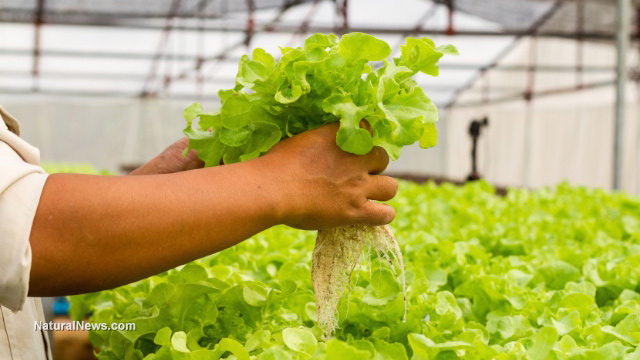Everything you need to grow plants in an aquaponics system
Thursday, February 21, 2019 by Mary Miller
http://www.bugout.news/2019-02-21-everything-you-need-to-grow-plants-in-an-aquaponics-system.html

You might have heard of hydroponics, which is a method of growing food without soil. You might have also heard of aquaculture, which is simply fish farming. Aquaponics combines these two ideas to create a sustainable and efficient system for growing plants. Both ideas work in unison with each other in a mutual relationship. The fish provide waste material that can act as a plant fertilizer, while the plants keep the water clean. The water can then cycle back and forth between the fish and the plants with little intervention. Here’s what you need to grow your own aquaponics system. (h/t to ThePrepperJournal.com)
A aquaponics system is mostly self-sustaining. This means that once you’ve set up the system, the only thing you’ll need to worry about is keeping the fish fed. Most basic aquaponics systems are often built vertically, with the plants growing on top of the fish tank. Sometimes, the system is set up with the fish tank and the plants growing beds side by side. What is important is there should be a gap between the two components that will allow you access to the fish at all times. (Related: Aquaponics: Is this promising, sustainable farming method the urbanized future of agriculture?)
Equipment needed
You will need a fish tank and a growing bed. These two components must exist in a delicate balance in order to sustain each other. A good ratio between the two would be around 10 gallons of water to every one to two square feet of growth area. A standard 10-gallon fish tank should suffice, and you can use a three-foot deep container as a growing bed. Some material you can use include a wooden crate, a plastic tub, or a plexi-glass container. You will need gravel for the bottom of your fish tank. This will serve as a bed for the essential bacteria to convert ammonia from the fish waste into nitrites, and then into nitrates. Of course, you will need water and an air pump to keep the water oxygenated. A water pump is also necessary to keep the water in a constant cycle. To connect the fish tank to the growing bed, you will also need about three feet of tubing. Since your aquaponics system will not be using soil, you will need a soil-less growing medium. Some examples of these include clay pebbles, pea gravel, perlite, and rock wool. You should also have a pH kit to test the water on a regular basis.
Recommended fish
The primary purpose of these fish is to provide fertilizer, so they are not typically meant for consumption. Some small fish that are easy to obtain for your aquaponics system include goldfish, guppies, mollies, and tetras. If you do plan to grow larger fish for consumption, you can try raising tilapia, catfish, trout, silver perch, carp, and barramundi. Keep in mind that if you are growing tropical fish or any fish that require warmer temperatures, then you will need an aquarium heater. Is is also important to calculate the density of the fish in relation to the amount of water. Too many fish can starve them of oxygen, while having too few can deprive your plants of nourishment.
Recommended plants
Some ideal beginner plants for a small indoor aquaponics system include basil, mint, and watercress. If you have a larger outdoor aquaponics system, you can grow a wider variety of plants including lettuce, tomatoes, peppers, cucumbers, strawberries, cabbages, kale, spinach, and other leafy greens. If your growing bed is deep enough, you can even grow root vegetables, such as carrots and turnips.
Once your aquaponics system is all set up, all you will need to do is to feed your fish on a regular basis. After that, you can just sit back and relax until your plants and ready to be harvested.
Sources include:
Tagged Under: Tags: aquaculture, aquaponic garden, aquaponics, bug out, fish farming, fish garden, food supply, gardening, homesteading, hydroponics, off grid, preparedness, prepper, prepping, self sufficiency, SHTF, survival, survival food, survivalist, sustainable living

